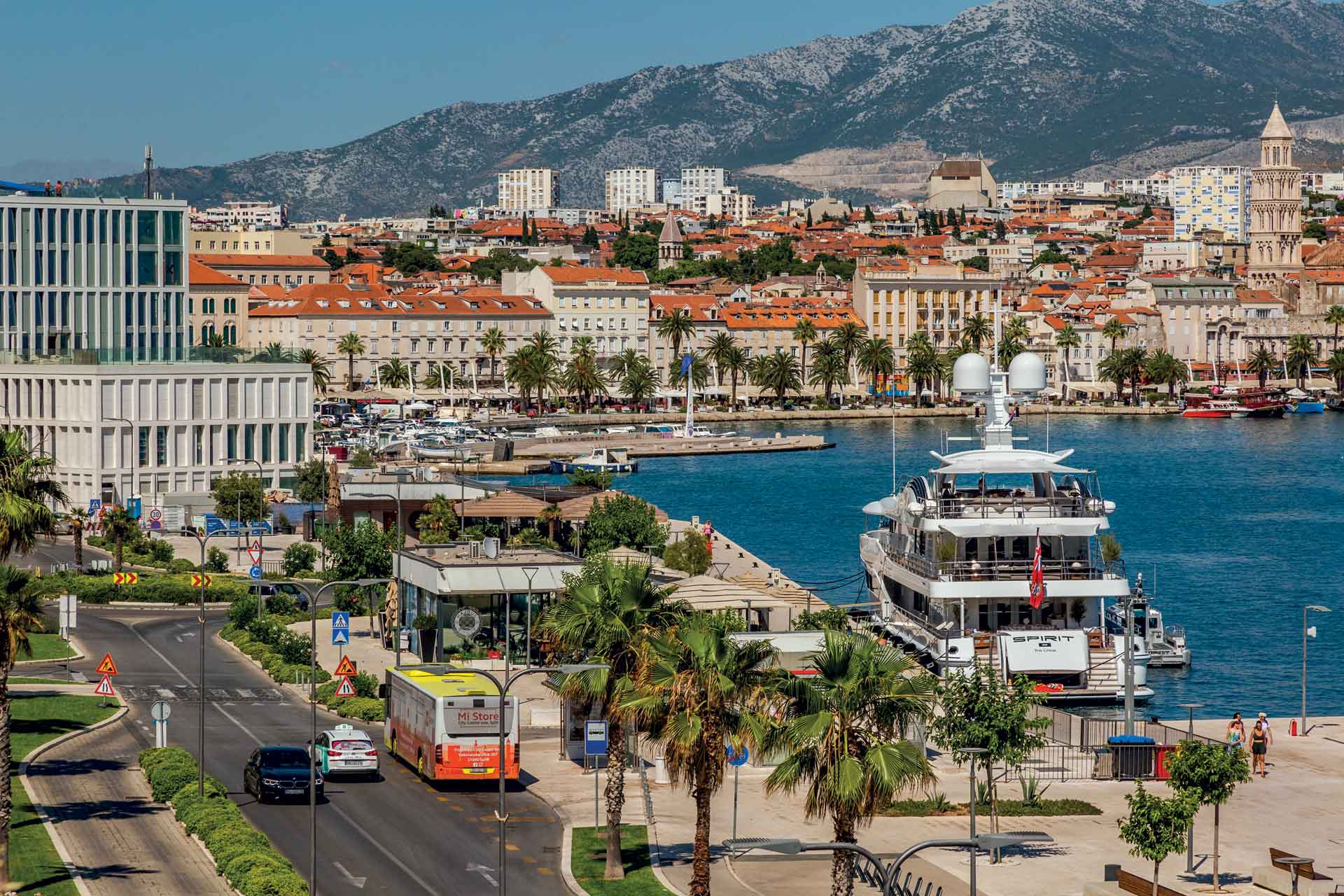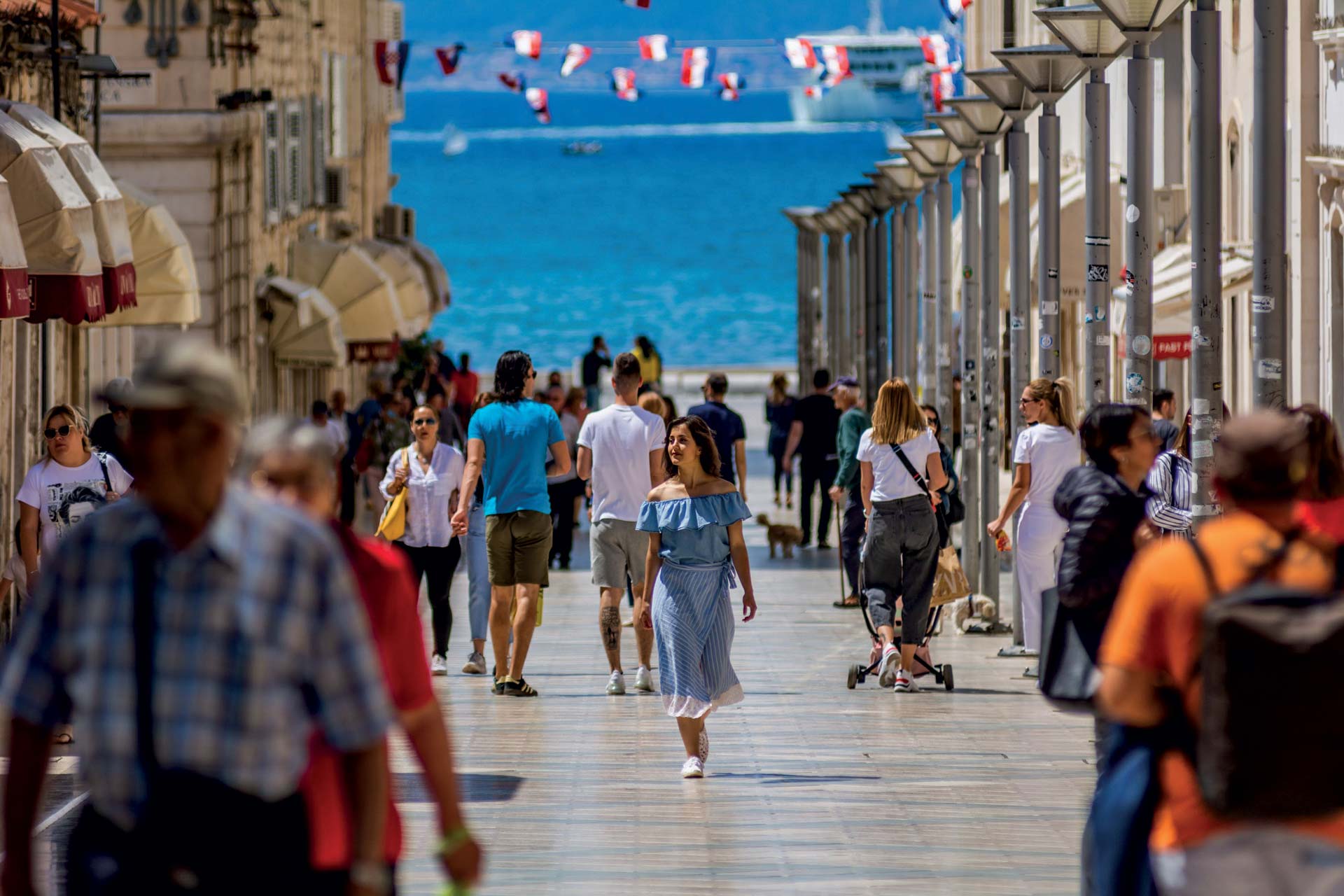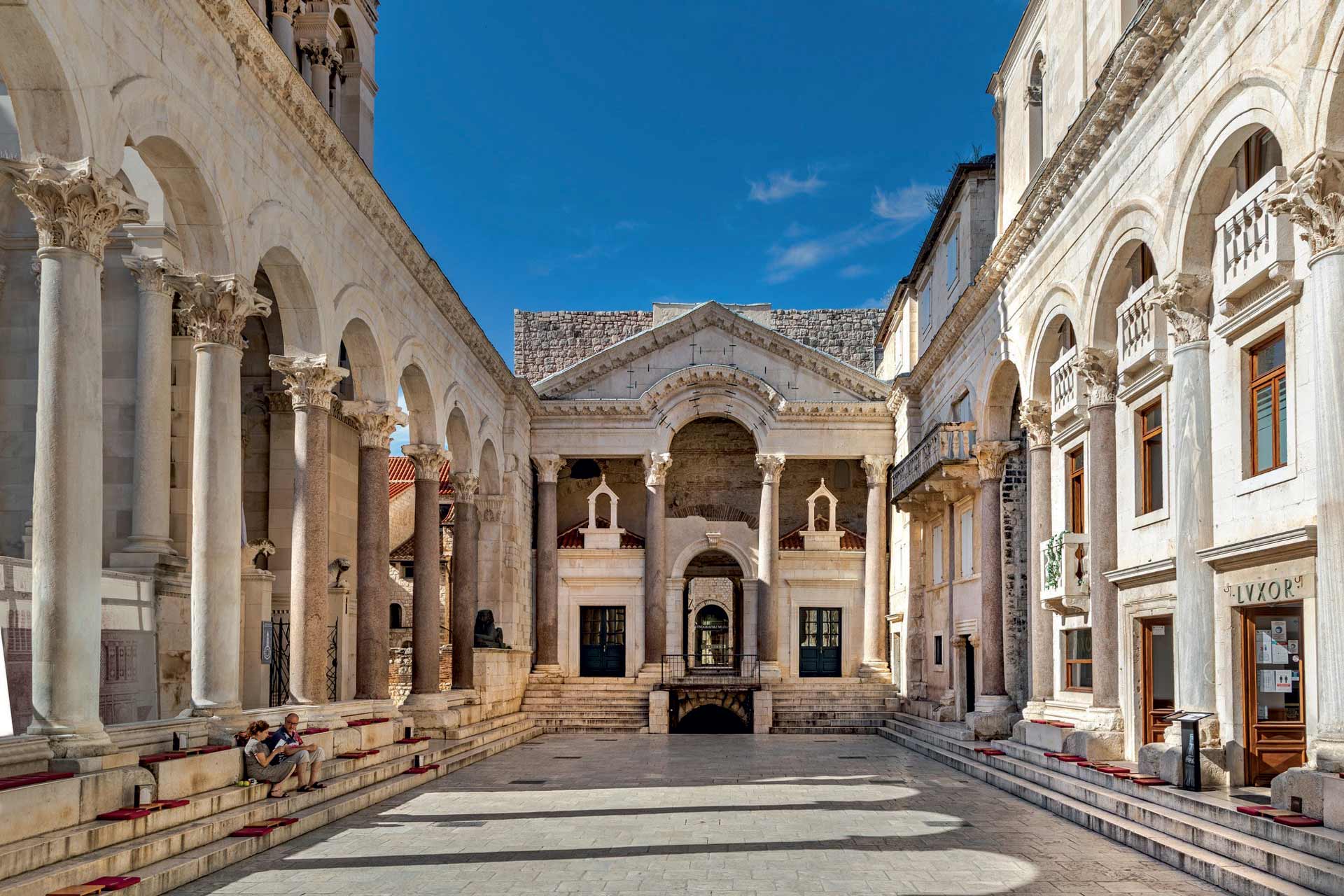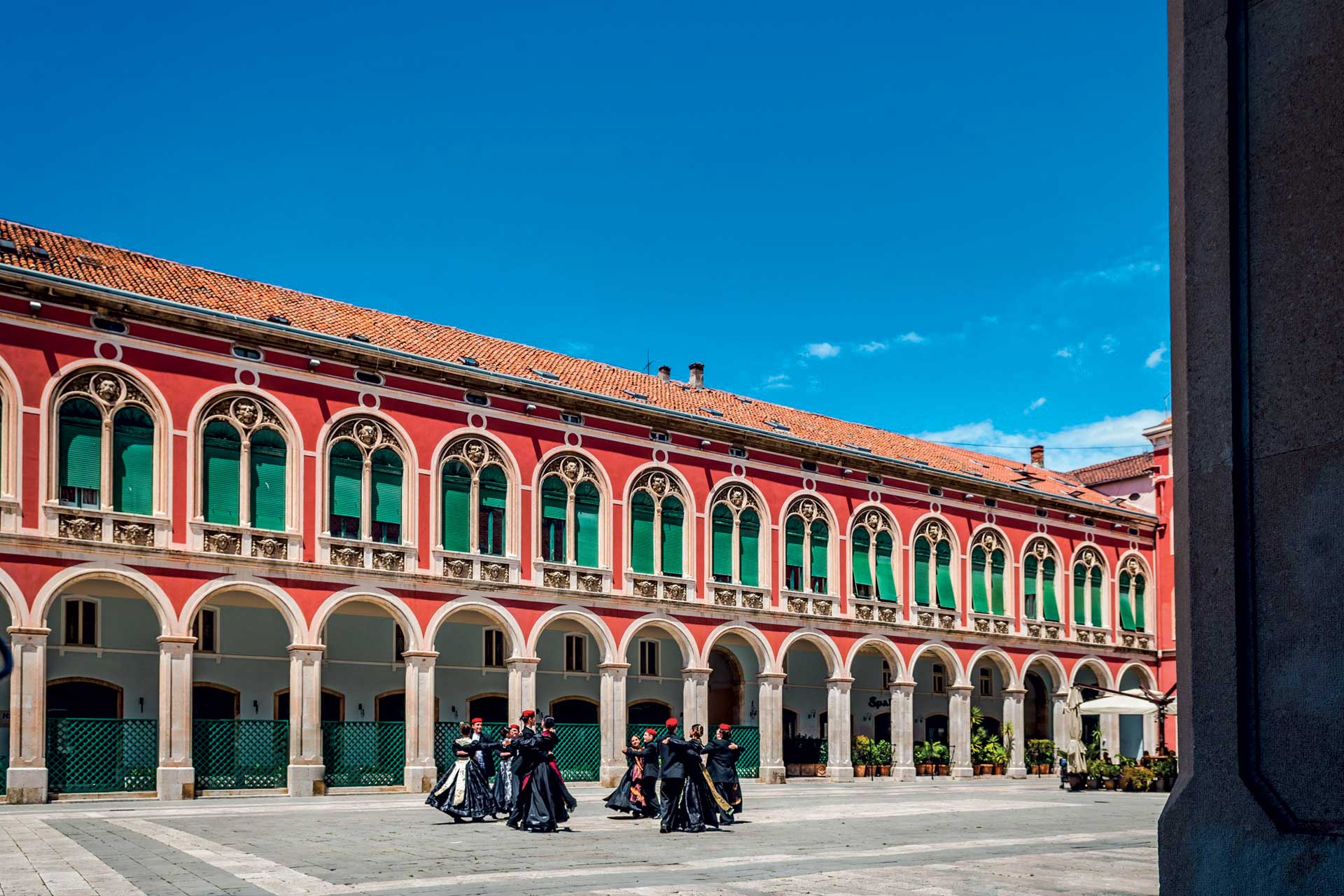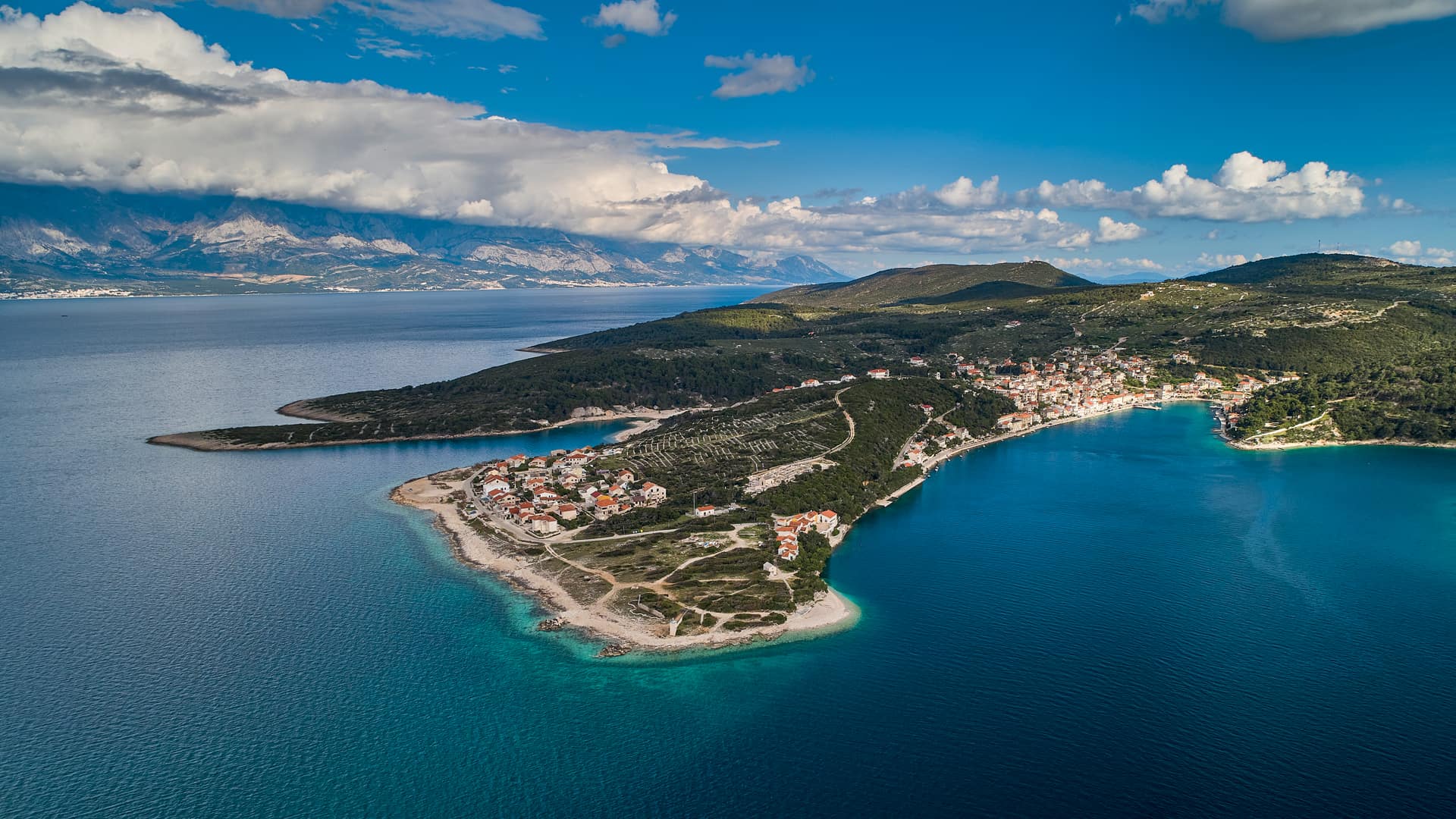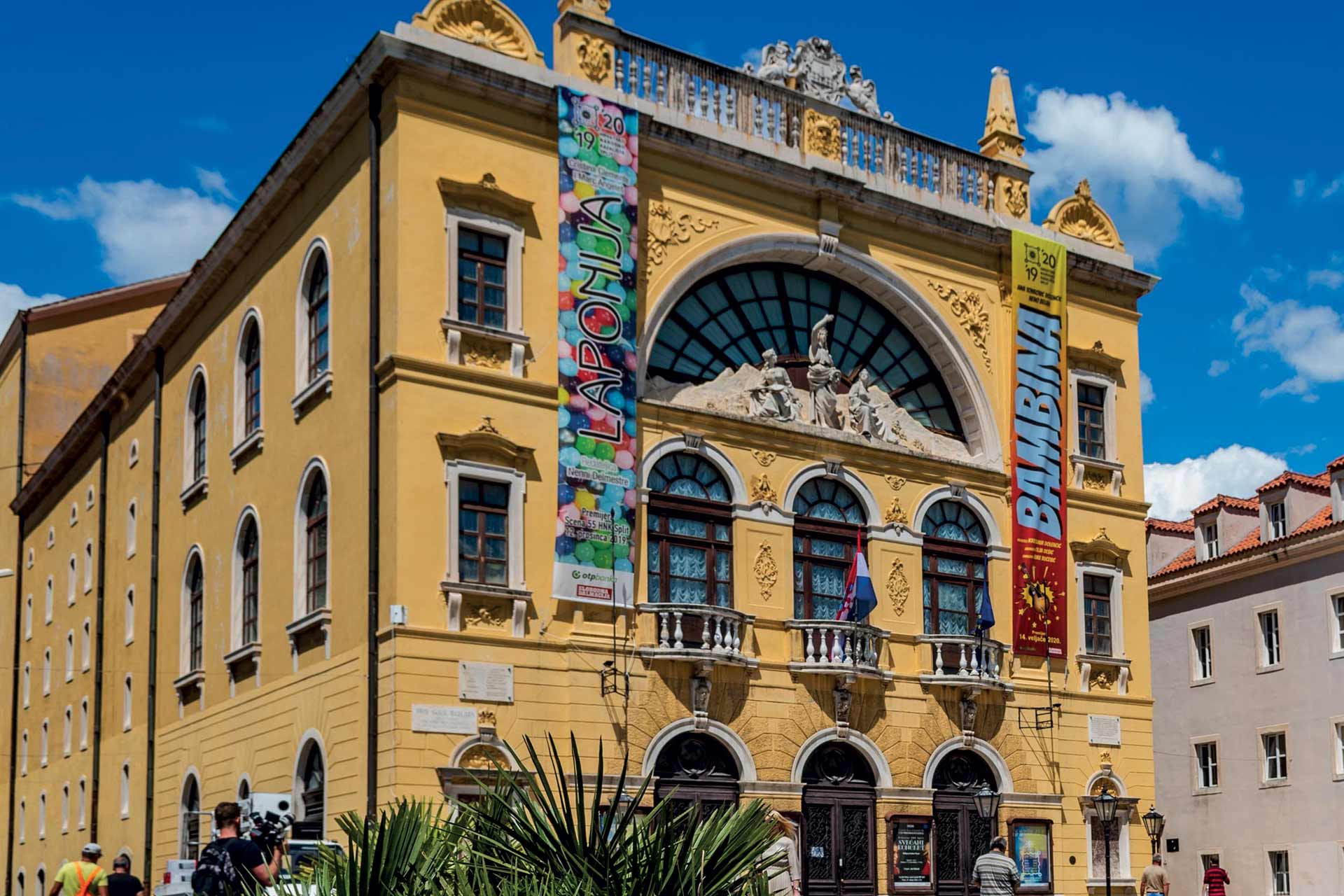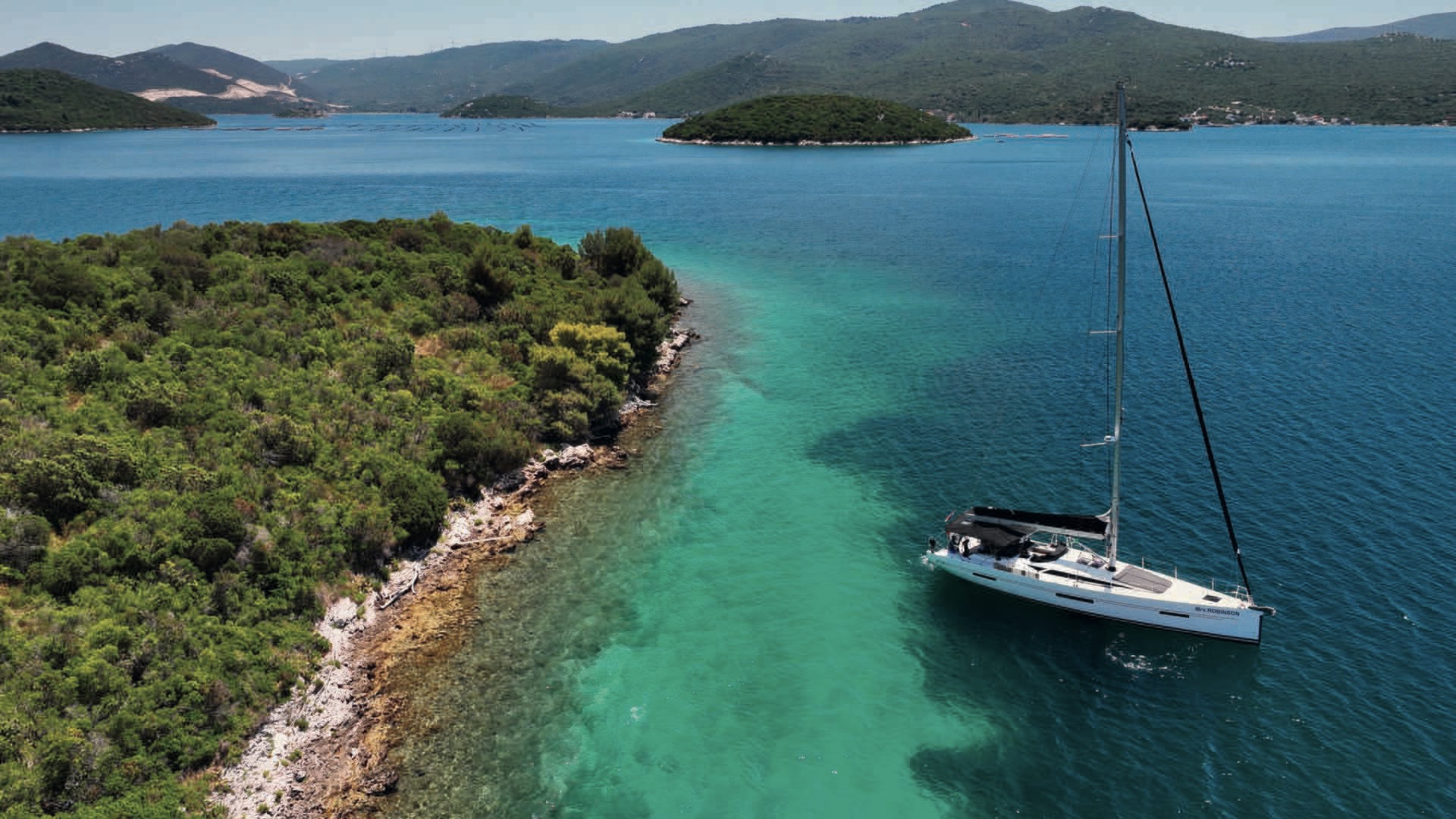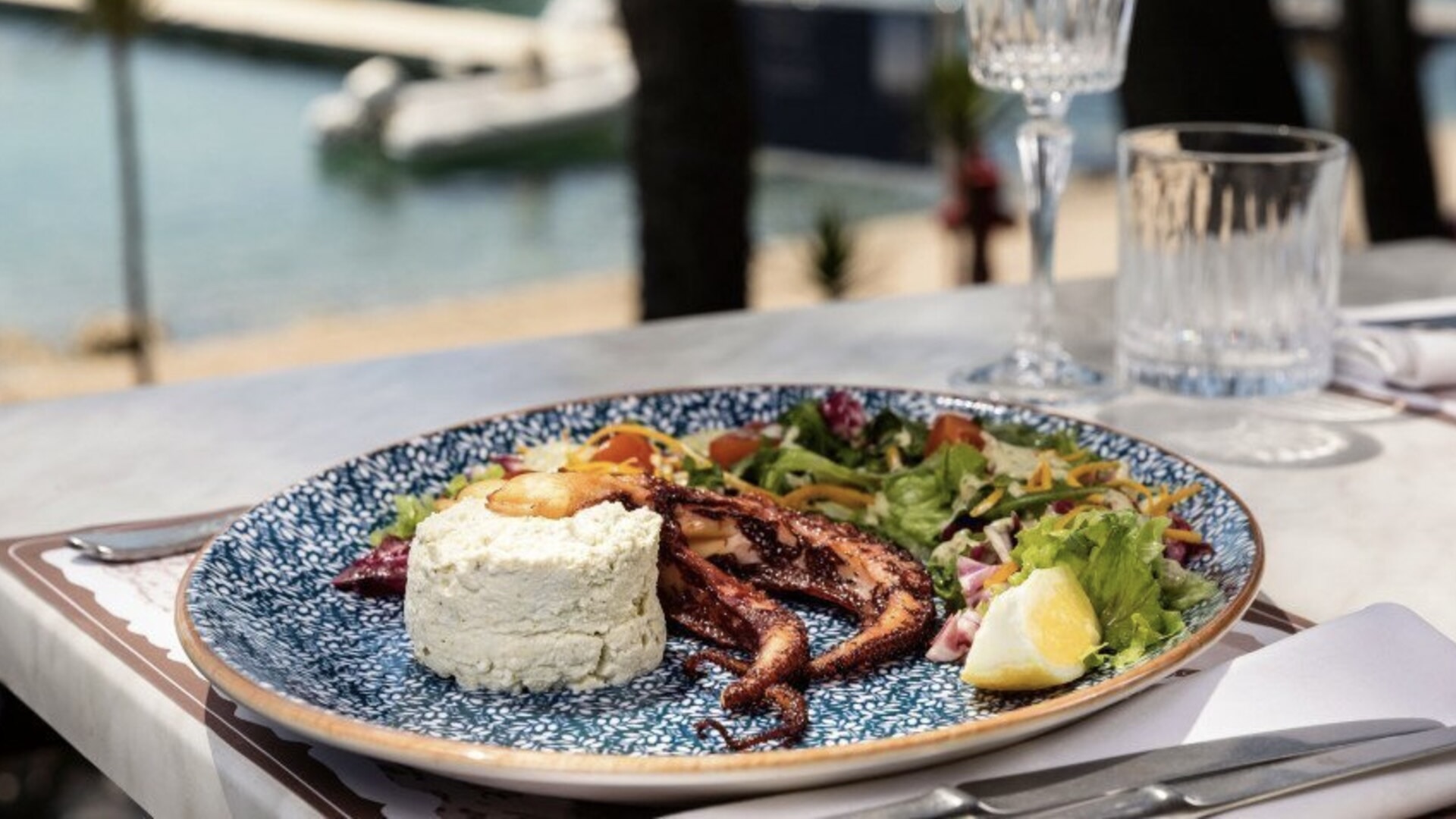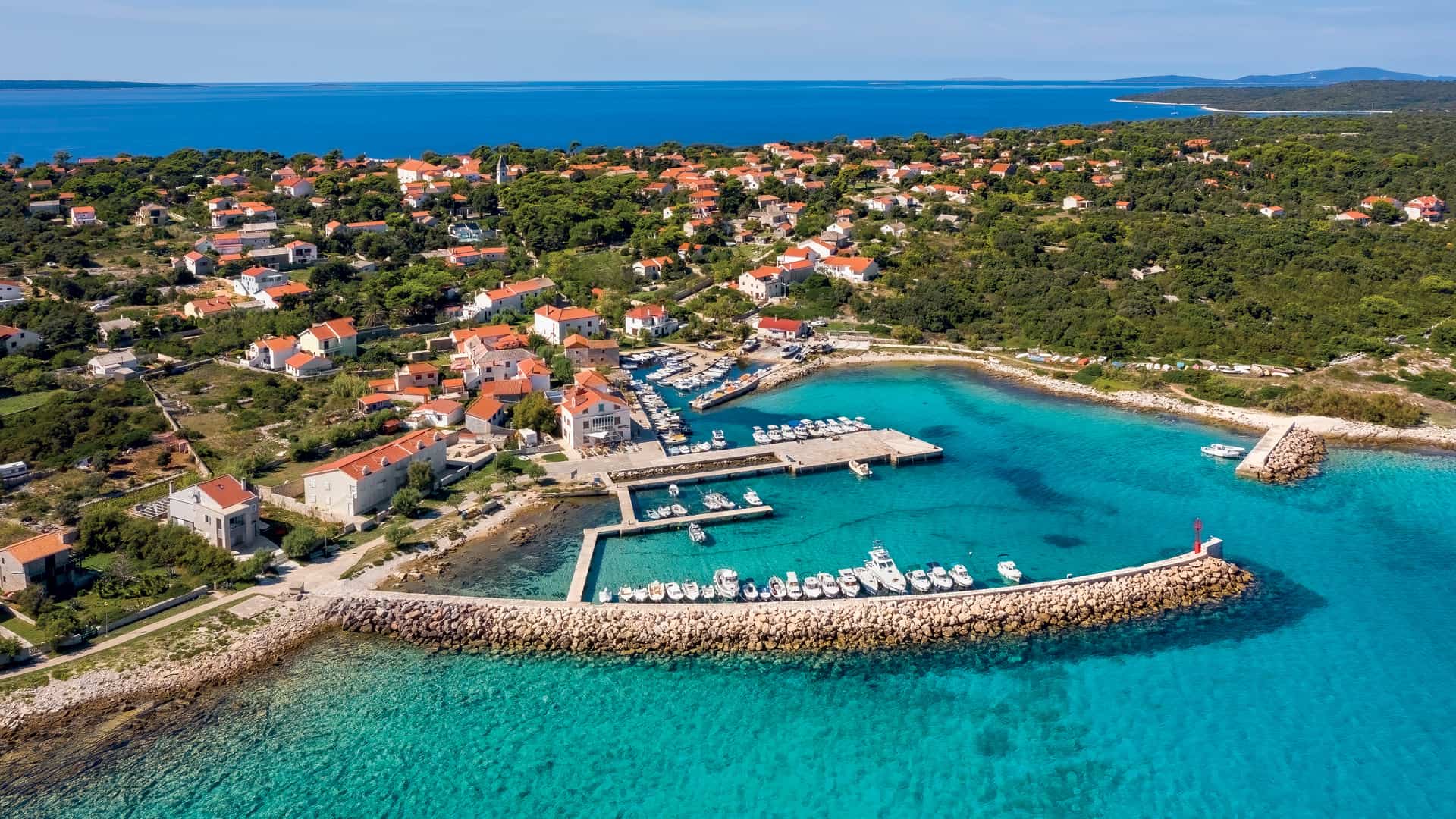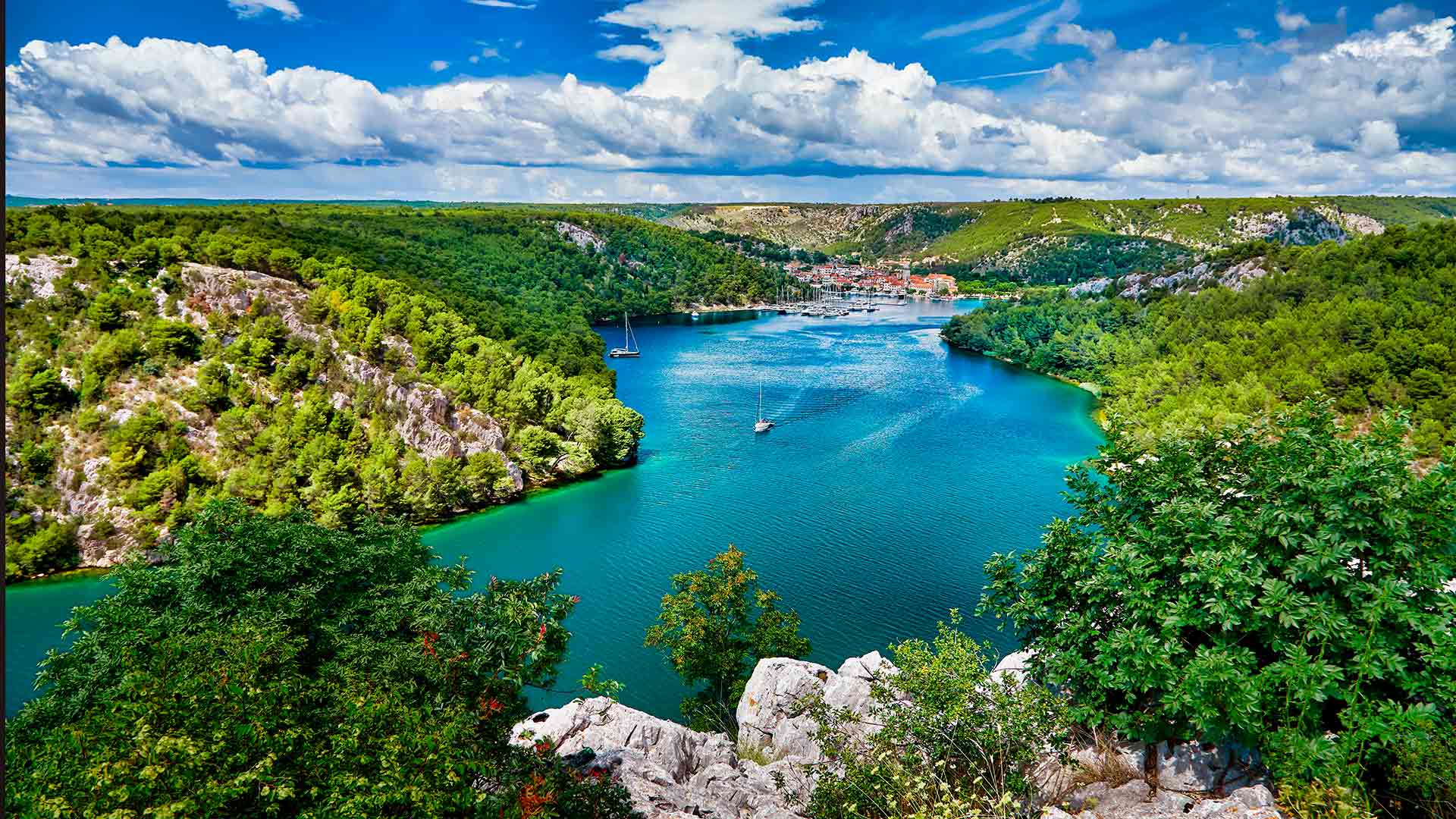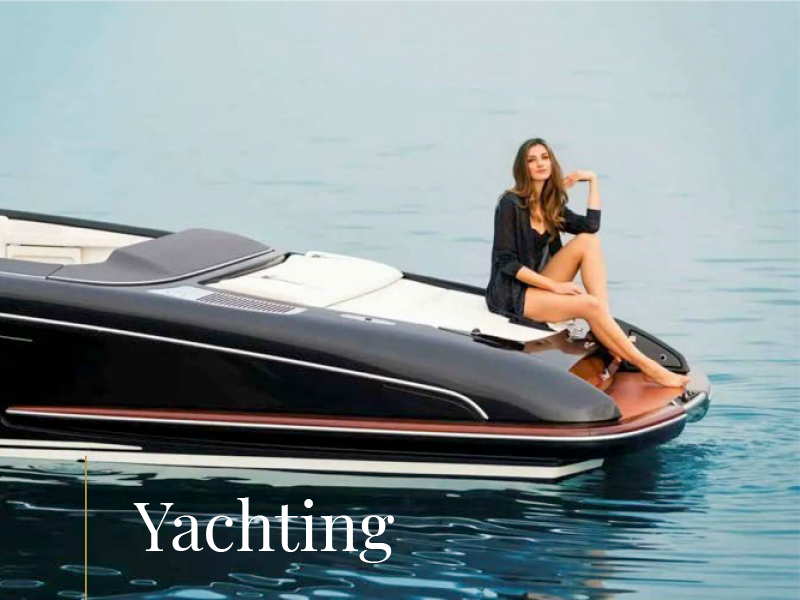City of Split is full of fascinating history that you can’t miss when wandering its streets, while providing you with the opportunity to fully reap the benefits of modern tourism
Split is the largest city on the Croatian Adriatic Coast and a favourite starting point for many sailors, the main reason being its central location. This makes it an excellent base for exploring, especially the Dalmatian islands of Brač, Šolta, Hvar and Vis, but also Korčula, Pelješac and Lastovo to the south or the unique Šibenik-Kornati archipelago to the north.
Reaching Split from the sea or leaving its port, and watching the city against the backdrop of Dalmatia’s mountains is a sight to behold. Furthermore, the offer and the numerous programs that you simply can’t find in smaller towns are equally important when sailing, which is why many people who start or end their sailing trips in Split also stay there. Over the summer, the luxury yachts tied up at Split’s West Coast are the kind you’d see in Monaco’s ports, so we tried to find the magic ingredients that draw modern yachters to Split.
It’s clear from the streets in the centre that the city experienced a tourism boom. Charming restaurants, imaginative ice cream shops and posh cafés, together with a couple of modern night clubs make Split an enjoyable destination for many, especially younger guests. On the other hand, an ideal complement to modern tourism is Split’s fascinating history which you can’t miss when wandering its streets.
The city was formed around the ancient palace built for the Roman emperor Diocletian, one of the best-preserved Roman buildings in Europe, which is part of the historic core of Split that was listed by UNESCO as a World Heritage Site in 1979. However, Split is not an open-air museum, but a place bustling with life among the historic layers of its buildings. Even though it’s practically impossible to do it in such a short time, we’ll try to give you some advice for a day in Split, because that’s how long yachters normally stay on land.
We suggest starting from the most important sight, Diocletian’s Palace and the city centre, including the town’s major promenade, the Riva. Even though the Old Town at the Palace and around it might feel like a maze, you can easily find your way if you consult the model of the historical centre at the Riva and a nearby panel showing a reconstructed Diocletian’s Palace. Built as a mix between a luxury villa and a Roman military camp (castrum), split into four by two main streets, Diocletian’s Palace is a rectangular building with four large towers on the corners and gates on each side.
The palace underwent many changes over the years by palace residents and later citizens of Split, so the original appearance of the buildings on the inside and the outer walls with towers was largely changed. However, the outline of the imperial palace is still visible. If you go west along the Riva and pass the many shops and stores there, you can enjoy the view of the Palace’s southern façade and the city harbour.
Reaching Split from the sea and watching the city against the backdrop of Dalmatia’s mountains is a sight to behold
You’ll pass squares such as Voćni (Fruit Square) or Narodni (People’s Square) and then reach the best-preserved northern wall of the Palace. Don’t forget to touch the thumb of Grgur Ninski (Gregory of Nin), the grand statue by the great Croatian sculptor Ivan Meštrović, as this is said to bring good luck. You’ll reach the magnificent Golden Gate, the terminal point of the road which in Roman times used to lead north towards Salona, largest Roman town in the eastern Adriatic coast, which only the emperor Diocletian and his family were allowed to use.
Go through it and enter the palace in imperial style and walk its ancient and medieval streets and squares, pass through Split’s narrowest street, called ‘Pusti me proć’ (Let Me Pass), right next to the former temple of Jupiter, and the Vestibule, all the way to the central imperial square, the Peristyle. It’s one of the most important examples of the Late Empire architecture, with a 3500-year-old Egyptian sphinx, and the bell tower of the Cathedral of Saint Domnius, patron saint of Split, next to it.
The church building is the former Mausoleum of Diocletian, making it one of the oldest Christian Cathedrals in the world. If you head south from the Peristyle, you’ll pass through the Cellars of Diocletian’s Palace and reach the Riva again. The cellars were used as the storage area for foodstuffs for the Palace and now they’re a major tourist attraction in Split, where scenes from ‘Game of Thrones’ were filmed.
If you head east from the Peristyle, you’ll pass the Silver Gate and reach the city market – Pazar and going west, the main Roman street, Decumanus, leads to the Iron Gate in the west and the People’s Square or the Pjaca. The clock there tells the time in a unique way as it has 24 digits. From the Pjaca, head on to the 120-year-old fish market, Peškarija, across the lively Marmont Street to the Prokurative, a lovely square similar to St. Mark’s Square in Venice.
Sit on the Riva, observing the ritual of long coffee drinking, or settle down with a glass of wine in one of the ancient squares and become a part the city’s spirit
If you have time, we suggest taking a walk through the neighbourhoods that have preserved the spirit of Old Split, notably Veli Varoš and Radunica. You can also visit the belvedere on Marjan Hill and enjoy a breath-taking view of the city. End your tour with a walk along Split’s Sports Walk of Fame on the West Coast, featuring the names of all Olympic medal winners from Split, which is especially convenient if your yacht is docked there.
Of course, there’s also the option of sitting down at one of the cafés and indulging in Split residents’ favourite ritual – sipping coffee, watching the bustle and the wacky tourists pass by.
Diocletian’s Dream
One of the best ways to get to know the history of Split first-hand is the Diocletian’s Dream VR experience, telling the story of Emperor Diocletian through a virtual tour of his palace in its former glory. Don’t miss the Ivan Meštrović Gallery and Crikvine–Kaštilac, home to priceless collections of works by the most famous Croatian sculptor. Chocolate lovers shouldn’t miss Split’s choco brand Nadalina in Diocletian’s Street. Another shop worth mentioning is Nered, a souvenir shop for people with good taste that carries the finest examples of Croatian design. If you opt for a morning stroll, you can buy fresh produce directly from the open-air market, the famous Pazar, which can be made into a delicious lunch on your yacht in no time.
Text TZ Split
Photos TZ Split / Maksim Bašić & Boris Kačan
Video TZ Split
